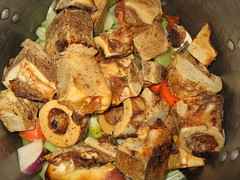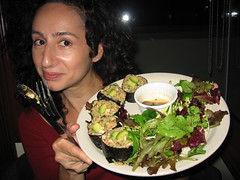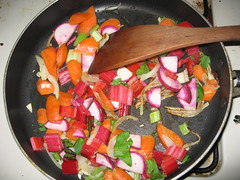
As an environmentalist, there’s nothing I like better than finding something fabulously useful to do with apparently useless things. As an OrganicFoodee, it’s doubly as cool when the apparently useless thing turns out to be a delicious ingredient. Of course, everybody’s grandmother knows that you should relish old bones instead of throwing them away. In just about every culture, people have been boiling up bones for as long as anyone can remember.
As an ex-vegan, I love the idea of using every part of an animal rather than sending parts of it to the landfill. It seems so wrong when we waste food, but wasting parts of an animal seems so much more immoral than wasting plant-based foods.
While making this rich brown beef stock, my kitchen went through three olphactory phases…
The first was the smell of roasting beef bones, which was a tallow-ish, beef dripping sort of fragrance. This stage made my vegan roommate slightly paler in complexion, and could be described as an acquired fragrance.
The second stage had an undeniably delicious and fresh aroma, the smell of fragrant vegetables, including carrots, celery and fennel (anise), delicate yet all-pervading, and mouth-wateringly evocative to all, whether meat eating or vegetarian.
The third stage was the longest stage, as the stock simmered and cooked for a good eight hours. The third stage prompted another of my roommates (there are eleven of them, don’t forget), to reminisce about her grandmother’s kitchen. It’s that thoroughly cooked, stewed beef, long-simmering soup frangrance that’s as homely as a picket fence and as comforting as a cat’s purr.









